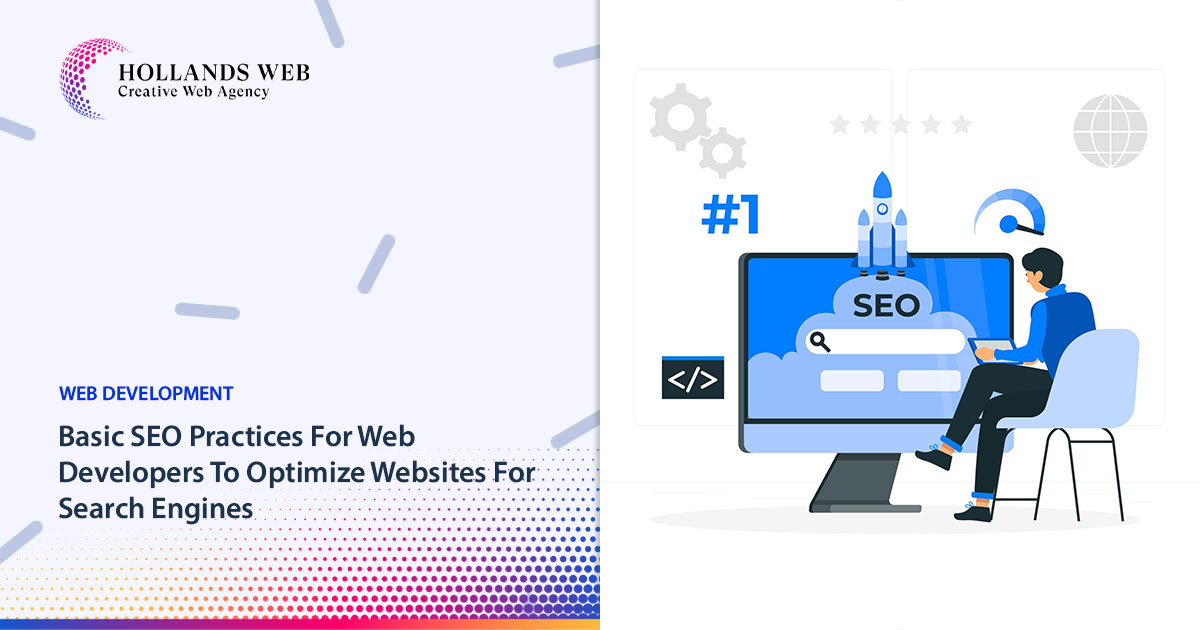No products in the cart.
Table of Contents
ToggleSearch engine optimization (SEO) is an often overlooked but crucial part of building websites. But it’s crucial if you want your site to rank higher in search engines like Google and attract more targeted visitors. In this article, we will delve into the cornerstones of SEO and equip web developers with practical advice and code snippets to optimize websites for search engines and enhance their sites’ visibility in search engines.
Page Title and Meta Description:
- Description: The page title (title tag) and meta description are HTML elements that provide a brief summary of the webpage’s content. They appear in search engine results and influence click-through rates. Read here the Ultimate Guide Of HTML Meta Tags.
- Example:html
<title>Web Development Best Practices</title>
<meta name="description" content="Learn essential web development best practices, including SEO, responsive design, and more." />
Header Tags (H1, H2, H3):
- Description: Header tags (H1, H2, H3, etc.) are used to structure content on a webpage. They indicate the hierarchy and importance of the content. H1 is usually the main heading.
- Example:html
<h1>Main Heading</h1>
<h2>Subheading 1</h2>
<p>Content for subheading 1.</p>
<h2>Subheading 2</h2>
<p>Content for subheading 2.</p>
Image Optimization:
- Description: Image optimization involves reducing image file sizes for faster loading times and using descriptive alt tags for accessibility and SEO.
- Example:html
<img src="image.jpg" alt="Web development best practices - Responsive design" />
URL Structure:
- Description: Create clean and descriptive URLs that include relevant keywords and provide a clear idea of the page’s content.
- Example:
- Good URL:
https://www.example.com/web-development-best-practices - Bad URL:
https://www.example.com/page123?ID=98765
- Good URL:
Read More About URL Structure:
Internal Linking:
- Description: Internal links connect different pages within your website, improving navigation and distributing page authority.
- Example:html
<a href="/services/web-development">Learn about our web development services</a>
Mobile-Friendly Design:
- Description: Ensure your website is designed to work well on mobile devices, as search engines prioritize mobile-friendly sites.
- Example: Use responsive design techniques in your CSS to adapt the layout for various screen sizes.
Page Loading Speed:
- Description: Optimize your website for fast loading times. This includes minimizing file sizes and using techniques like browser caching.
- Example: Compress images and use a content delivery network (CDN) to distribute content for faster loading.
XML Sitemap:
- Description: An XML sitemap is a list of all the pages on your website that helps search engines crawl and index your content more effectively.
- Example: Here’s a simplified example of an XML sitemap:xml
<?xml version="1.0" encoding="UTF-8"?>
<urlset xmlns="http://www.sitemaps.org/schemas/sitemap/0.9">
<url>
<loc>https://www.example.com/page1</loc>
<changefreq>daily</changefreq>
</url>
<url>
<loc>https://www.example.com/page2</loc>
<changefreq>weekly</changefreq>
</url>
</urlset>
Schema Markup:
- Description: Schema markup, also known as structured data, provides search engines with additional information about the content on your pages. This can lead to enhanced search results, known as “rich snippets.”
- Example:html
<script type="application/ld+json">
{
"@context": "http://schema.org",
"@type": "Article",
"headline": "Web Development Best Practices",
"datePublished": "2023-10-31",
"author": {
"@type": "Person",
"name": "Your Name"
},
"image": "https://www.example.com/images/article.jpg",
"publisher": {
"@type": "Organization",
"name": "Your Company",
"logo": {
"@type": "ImageObject",
"url": "https://www.example.com/logo.jpg"
}
},
"description": "Learn essential web development best practices, including SEO, responsive design, and more."
}
</script>
Canonical Tags:
- Description: Use canonical tags to indicate the preferred version of a page if you have duplicate or very similar content to avoid duplicate content issues.
- Example:html
<link rel="canonical" href="https://www.example.com/preferred-page" />
Robots.txt File:
- Description: The robots.txt file tells search engines which parts of your website should not be crawled. Be careful when using it to avoid blocking important content.
- Example: Here’s a simple example of a robots.txt file:javascript
User-agent: *
Disallow: /private/
301 Redirects:
- Description: Implement 301 redirects to direct users and search engines from old or deleted pages to new and relevant pages. This preserves link equity and avoids “404 Not Found” errors.
- Example: In an
.htaccessfile, you can use:bashRedirect 301 /old-page.html /new-page.html
SSL Certificate:
- Description: Secure your website with an SSL certificate to enable HTTPS. Google considers HTTPS as a ranking factor, and it also instills trust in users.
- Example: Install an SSL certificate on your server to enable HTTPS.
Pagination Tags (for paginated content):
- Description: Use rel=”next” and rel=”prev” tags to help search engines understand the relationship between paginated content.
- Example:html
<link rel="next" href="https://www.example.com/page2" />
<link rel="prev" href="https://www.example.com/page1" />
Monitor and Adapt:
- Description: Regularly monitor your site’s performance, rankings, and user behavior using tools like Google Search Console and Google Analytics. Adjust your SEO strategy based on data and insights.
Conclusion:
Web developers must implement even the most fundamental SEO strategies to increase their sites’ discoverability. Using these basic SEO guidelines and the provided code examples, you can lay the groundwork for your website’s search engine optimization. Keep in mind that search engine optimization is a never ending process and that maintaining a high ranking in the SERPs requires constant attention and maintenance.
You may also like
Table of Contents Toggle So how do I login via SSH on my Plesk-VPS?Power User ViewService Provider View With our install...
Holland web
July 3, 2022 2 min readTable of Contents Toggle Create Google Analytics in just 5 steps:Set up Google Tag ManagerSet up Google AnalyticsSet up ...
Holland web
August 15, 2022 7 min readTable of Contents Toggle Benefits of brandingWhat is brand building? Three stages can be identified in branding:Now, is ...
Holland web
August 15, 2022 5 min read




 Web Hosting
Web Hosting Web Designs
Web Designs Graphic Design
Graphic Design SEO
SEO Digital Marketing
Digital Marketing
Best WordPress plugins and services
Table of Contents Toggle WordPress Web HostingWebsite Design / ThemeSecurityPerformanceMarketingMonetizationStylingComme...
Holland web
February 12, 2020 6 min read